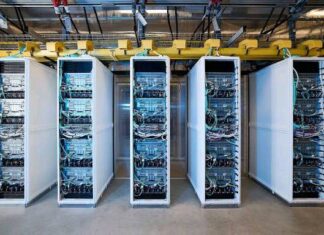When you purchase through links on our site, we may earn an affiliate commission. This doesn’t affect our editorial independence.
AI is everywhere these days. It is transforming how we create content, secure data, discover drugs, and manage supply chains. There is a massive hype around popular models like ChatGPT and Deepseek, as well as AI’s application in automation (for example, autonomous driving). But unknown to most people, the race for more powerful GPUs has led to the development of a neuromorphic chip, a profound and sweeping transformation in chip design. Lying at the centre of the GPU and computing race is the overarching goal to enhance AI, making it smarter, faster, and in several ways, more human-like.
Neuromorphic computing, powered by neuromorphic chips, is a radical new way to build computer systems that don’t just process information but learn like a biological brain.
Why Traditional Chips Are Hitting a Wall
Today’s AI runs on conventional CPUs and GPUs, though fast, but rigid. They process data in a linear order, one at a time. The problem emerging is that AI is getting bigger, hungrier, and more power-intensive, pushing traditional hardware to its limits.
Neuromorphic chip uses radical new approach. Instead of forcing AI into a linear workflow, they mimic biological neural networks in the following ways:
- They use spiking neurons that fire only when needed (just like real neurons).
- Process data in parallel, handling multiple tasks at once.
- Sip power instead of guzzling it, making them perfect for edge AI, including smart sensors, drones, and wearables that don’t rely on the cloud.
Why The Neuromorphic Chip Is Breaking Out Now
The timing couldn’t be better. AI workloads are exploding, energy costs are soaring, and industries are desperate for smarter, more efficient solutions. Neuromorphic chip isn’t just a lab experiment anymore—it’s honest and working.
One neuromorphic chip already in existence is Intel’s Loihi 2 chip—it’s already showing 100x energy savings over traditional chips. Another is Cortical Labs’ DishBrain, which merges living neurons with silicon, and has learnt to play games like Pong in real time. And this technology is still in its infancy.

Where Neuromorphic Chips Will Make the Biggest Impact
We’re still in the early days of neuromorphic chips, but the potential is staggering: This innovation could lead to the transformation of fields like:
1. Edge AI & Robotics
- Drones and autonomous vehicles: With their minimal power consumption, neuromorphic chips can lead to the development of drones that navigate complex environments without draining their batteries or self-driving cars that process sensor data instantly, without lag and cloud dependency.
- Smart Sensors & IoT: Neuromorphic chips could make edge devices far sharper. It will enable the development of security cameras that detect threats accurately, in real time. And smarter factory equipment with reduced failure rates.
2. Healthcare Breakthroughs
- Wearable Diagnostics: A smartwatch that doesn’t just track your heart rate but detects arrhythmias and forestalls emergencies.
- Adaptive Prosthetics: Neuromorphic chips could unlock the development of adaptive prosthetic limbs. These enhanced prosthetics respond to neural signals like natural ones.
- Brain-Computer Interfaces (BCIs): Neuromorphic chips are expected to improve communication between the mind and machine through an enhanced brain-computer interface.

- Fraud Detection: Neuromorphic chips can facilitate the development of software that can spot subtle, suspicious patterns in financial transactions that traditional AI might miss.
- Cyberattack Prevention: Similar to fraud prevention, neuromorphic chips can facilitate systems that identify and respond to anomalies in network traffic.
4. Energy Efficiency
2% of global electricity is now consumed by data centres. Using neuromorphic chips to power AI could slash that by making computations far more efficient.
Check Out Our Previous Posts:
Who’s Leading the Charge in Neuromorphic Computing?
Several bold startups and tech giants are racing to build the neuromorphic future. Some of these companies include:
- BrainChip (BRCHF): A pioneer with its Akida neuromorphic processor, already used in defence and smart sensors. Partners include Mercedes, NASA, and Raytheon—but it’s still speculative.
- Intel (INTC): The Loihi 2 chip by Intel is one of the most advanced. Intel would be positioned for computing dominance if this tech takes off.
- IBM: IBM’s TrueNorth chip laid early groundwork for neuromorphic chip development. IBM’s deep research in neural-inspired computing makes the company a vibrant player in this field.
Other Enablers of Neuromorphic Chip Development Are:
- Cadence (CDNS) and Synopsys (SNPS): Both companies design tools to build neuromorphic chips.
- Lattice Semiconductor (LSCC): The company’s vast infrastructure is essential for chip research, development and deployment.
- Nvidia (NVDA) and Qualcomm (QCOM): Even though both companies are not focusing on developing neuromorphic chips, their edge AI infrastructure will play a role in their deployment.
The Big Picture
This isn’t just another chip iteration—it’s a fundamental shift in computing and AI development. If successful, neuromorphic computing will not only improve AI but redefine it. And like every major tech leap before it, the biggest winners will be those who get in early.
We’re past the theory phase. The chips exist. The use cases are real. The question isn’t if neuromorphic computing will take off—it’s when. For investors, builders, and innovators, it is clear that the future of AI will be full of more powerful and advanced models, and the race to dominate this field is already on.







